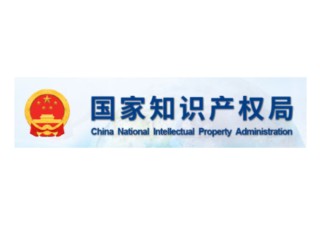A Chinese court recently awarded New Balance more than Rmb10 million (US$1.5 million) for trademark infringement, one of the highest compensations ever granted in China when compared to similar violations of other international companies’ IP.
The Intermediate People’s Court of Suzhou found the three defendants, Zheng Chaosong, Xinpingheng (a Chinese translation of New Balance) Sporting Goods, and Bosidake Trading company, guilty of copying New Balance’s iconic sloping “N.”
The court said the trio that manufactured shoes under the brand New Boom had shown a “malice by free-riding,” which led to “confusion by a large number of consumers,” according to a copy of the ruling obtained by The New York Times.
“A great number of consumers’ comments collected from various online platforms have well-proved the consumers’ confusion,” says Luke Minford, chief executive at Rouse in Beijing. “This is also a result of China’s e-commerce boom.”
The ruling arrived three days after US President Donald J. Trump initiated a probe into China’s alleged IP theft, although Minford says the New Balance win is unconnected to politics.
“It is highly unlikely that these events are in any way connected. In fact, although the publication of the decision was three days after the announcement of the USTR investigation, the publication of the decision had been scheduled by the court long before any announcement of a USTR investigation,” says Minford.
The IP Commission Report estimates that Chinese counterfeits cost the US US$600 billion annually.
“China has done a huge amount to develop the IP landscape for rights owners over the last 20 years, although there are still many areas that require further strengthening and improvement,” says Minford.
In addition, New Balance might have benefited from China’s new trademark law, which was implemented on May 1, 2014, and increased the upper limit of trademark infringement awards from US$75,000 to US$450,000 – just a third of what the court awarded New Balance.
“It’s important to remember that the statutory damages are only an upper limit in the case that the judge is making a discretionary award and does not have other evidence to calculate the damages,” Minford says. “Also, in this case, a great deal of evidence regarding the scale of the defendant’s infringement was presented to the court, including the number of online and offline stores, advertising coverage, personal statements from representatives of the company, stock levels of infringing items stored at their warehouse, etc, all of which helped establish that the level of damage caused to the plaintiff was in excess of Rmb10 million (US$1.5 million). More importantly, the court was able to take into account the infringer’s obvious bad faith which, according to the Trademark Law of China, the court can consider in determining punitive damages.”
Unlike most parts the western hemisphere, China is still a first-to-file jurisdiction, so, in 2013, New Balance lost its dispute with Chinese shoemaker Xin Bailun, which claimed to have registered in June 2004, two years before New Balance started promoting the same brand name. New Balance appealed, and lost again in June 2016, and was ordered to pay the Chinese company Rmb5 million (US$750,000).
As China’s IP ecosystem is becoming more established, is it not likely to change from being a first-to-file jurisdiction in the foreseeable future, but judges are showing increasing willingness to make equitable rulings on the merits of the case.
“China remains a first-to-file system, but this decision, and others like it, demonstrate that the courts are increasingly willing to take a broad view when looking at the evidence and circumstances of the infringement, especially evidence of bad faith,” Minford says. “That is the essential role of the judge as arbiter of fact and law, and what we are now seeing is the fruit of many years of training that IP judges in China have received both at home and abroad.”
The recent court ruling marks an unprecedented victory for New Balance and other global brands that try to compete with their Chinese infringement rivals. Minford says we can likely expect more victories for foreign brands in the future.
“However, rights owners (both domestic and international alike) must get onto the front foot. It will not happen by itself, which means investing in the intelligence, developing the evidence systems, building the expertise in-house and through external collaborations. This kind of landmark decision isn’t a random event, it is the result of numerous proactive decisions that start long before the case is even filed,” he says.
New Balance entered the Chinese markets in 1995 under the transliteration Niu Balun, and has since fought with severe local infringement.
This case was handled by Rouse working together with its affiliated law firm in China, Lusheng. Carol Wang, was the lead lawyer from Lusheng.







